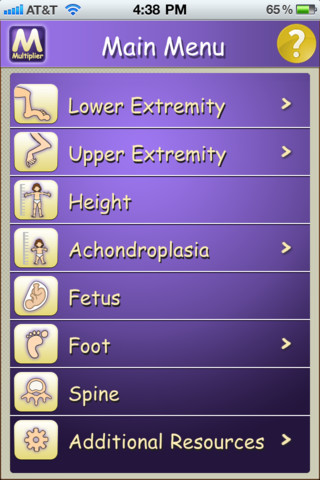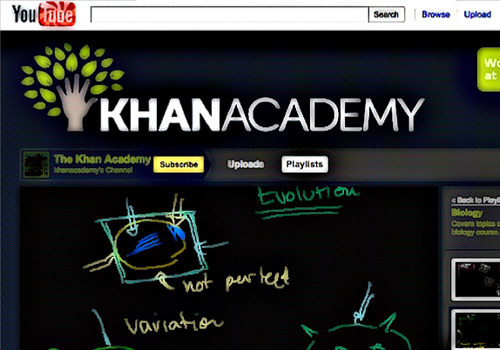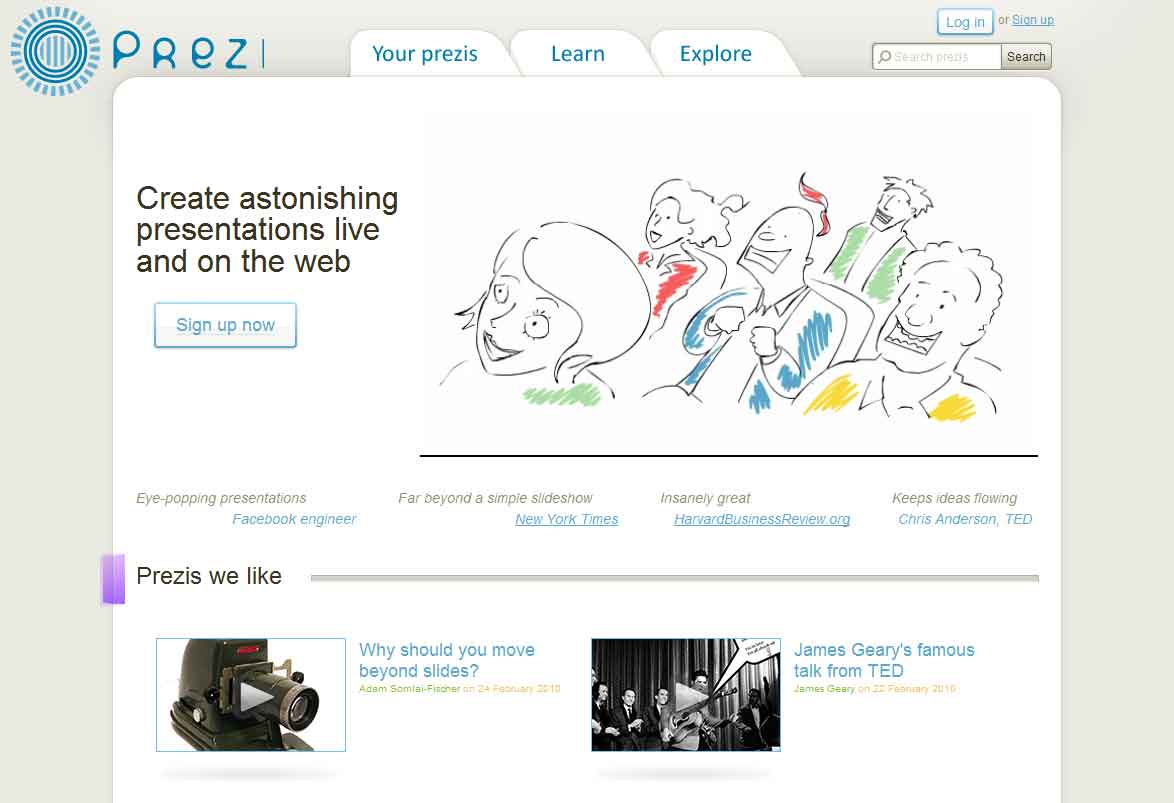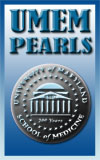Category: Medical Education
Keywords: app (PubMed Search)
Posted: 4/9/2012 by Rob Rogers, MD
(Updated: 12/17/2025)
Click here to contact Rob Rogers, MD
Well, here is a cool little app that has recently been released. It's an app that can predict what a child's height will be as a mature adult. This is not a joke.
A free mobile application developed by the International Center for Limb Lengthening (ICLL) at the Rubin Institute for Advanced Orthopedics (RIAO) of Sinai Hospital (right in our very own Baltimore) can predict the future mature height and bone lengths of children with the input of basic information.
That's right people. The formula has amazing accuracy and has been studied in many different centers. It's supposedly 97%+ accurate in predicting height.
The Multiplier App, available for Android, iPhone and iPad devices, is based upon the Multiplier Method, a series of formulas used to calculate and predict height and bone length in children. These formulas were developed by a team that included members of the ICLL.
Here is what it looks like. Just click on "Height" (see enclosed jpg image of the app) and then type in the child's birthday and current height in either inches or cm. The formula will then calculate what there predicted height will be.
Very, very cool ( at least I think)

International Center for Limb Lengthening, Rubin Institute for Advanced Orthopedics, Sinai Hospital of Baltimore, Baltimore, Maryland, USA.
Category: Medical Education
Keywords: education, whiteboards (PubMed Search)
Posted: 3/12/2012 by Rob Rogers, MD
(Updated: 12/17/2025)
Click here to contact Rob Rogers, MD
Every heard of the Khan Academy website? If you have, you will instantly recogize what a powerful force this website has become in education. If you haven't, what are you waiting for? Head to http://www.khanacademy.org/ and check it out! This site gets millions of hit PER DAY.
The Khan Academy was developed by, guess who, a guy named Kahn, Salman Kahn. This website is amazing. My kids use it for some of their school work. Trust me, check it out. If you want to know just how good this guy is...check out the size of the check Bill Gates wrote him.
What does this have to do with medical education? The videos put together by Khan utilize a teaching modality called a "whiteboard." This type of teaching technology is changing they way educators deliver material. Programs like Doceri (www.doceri.com) utilize this concept. You can build presentations and teaching materials with audio included.
My pearl for you today is really more of an assignment...go to the two websites and check them out. First, visit the Khan Academy site and then the Doceri site. THIS kind of thing is the future of education...

Category: Medical Education
Keywords: Prezi, Power Point (PubMed Search)
Posted: 2/20/2012 by Rob Rogers, MD
(Updated: 12/17/2025)
Click here to contact Rob Rogers, MD
Getting tired of the same old Power Point presentations? Getting bored with Apple's Keynote? Looking for something new to excite learners?
Well, you might want to consider using a newer presentation tool, a tool designed to eliminate those boring bullet points...
Say hello to Prezi...

This really cool presentation tool allows you place all of your content (words, pictures, video, etc) on one canvas and then manipulate the sequence you want to show it in.
Check out the website and give it a try: www.prezi.com
Simply click on some of the sample Prezi presentations on the site. It's very cool and quite addictive.
ww.prezi.com
Category: Medical Education
Keywords: Interns, Emergency Medicine (PubMed Search)
Posted: 8/1/2011 by Rob Rogers, MD
(Updated: 12/17/2025)
Click here to contact Rob Rogers, MD
In a 1991 article published by Wrenn and Slovis, the ten commandments of emergency medicine are discussed. This is an awesome article and a must read for everyone in EM.
Michelle Lin recently mentioned these on her blog, Academic Life in Emergency Medicine....
The Ten Commandments of Emergency Medicine:
1. Secure the ABC's
2. Consider or give naloxone, glucose, and thiamine
3. Get a pregnancy test
4. Assume the worst
5. Do not send unstable patients to radiology
6. Look for common red flags
7. Trust no one, believe nothing (not even yourself)
8. Learn from your mistakes
9. Do unto others as you would do to your family (and that includes coworkers)
10. When in doubt, always err on the side of the patient
These are great teaching pearls for new interns and for the rest of us as well....
Wrenn, Slovis
Michelle Lin's blog, Academic Life in Emergency Medicine
Category: Medical Education
Posted: 5/2/2011 by Rob Rogers, MD
(Updated: 12/17/2025)
Click here to contact Rob Rogers, MD
I found this neat little pearl on Michelle Lin's blog, Academic Life in Emergency Medicine, and thought it was worth sharing with everyone:
"In my theme of detoxifying malodorous smells in the ED (see Toxic Sock Syndrome and abscess drainage), I recently learned of a new way of masking odors. Imagine the stress on your olfactory nerves from the combined effects of urinary and fecal incontinence from a nursing home patient.
An ingenious nurse proposed nebulizing actual coffee within the room. Unfortunately, our ED was out of coffee at the moment.
Trick of the Trade:
Nebulized orange juice
I only learned of this trick after walking into the patient's very subtly foggy room. About 4 cc of orange juice had been nebulizing for a few minutes. The room smelled a little like a Jamba Juice (a smoothies/ juice shop). Quite pleasant actually. I was shocked to find that it masked the odors quite well."
Thanks for the tip, Michelle. Freshly-squeezed anyone??
Michelle Lin, Academic Life in Emergency Medicine
Category: Medical Education
Keywords: education, quality improvement (PubMed Search)
Posted: 12/13/2010 by Dan Lemkin, MS, MD
Click here to contact Dan Lemkin, MS, MD

Dear Readers,
Thank you for your continued interest in the University of Maryland's EM Pearls program. We are conducting a survey to assess whether our pearls are meeting your needs. Data collected will be used to refine and improve our educational program. Please take 1 minute to complete our survey by clicking the link below.
http://umem.org/surveyor/index.php?sid=86815&newtest=Y&lang=en
If you regularly forward pearls to other readers, please forward this message as well. We wish to capture as many readers' opinions as possible.
If you have any questions or problems, please contact: admin@umem.org
Sincerely,
Dan Lemkin, MD MS
EM Pearls Development Team
University of Maryland School of Medicine
Department of Emergency Medicine
Category: Medical Education
Posted: 8/10/2010 by Rob Rogers, MD
(Updated: 12/17/2025)
Click here to contact Rob Rogers, MD
Some Tips for Designing an Insanely Great Talk
Here are just a few things you can do to create a fantastic presentation:
Great website for making great, memorable slides:
http://www.brainslides.com/
Amal Mattu, Joe Lex, Mel Herbert
Category: Medical Education
Keywords: Pulmonary Embolism (PubMed Search)
Posted: 7/5/2010 by Rob Rogers, MD
(Updated: 12/17/2025)
Click here to contact Rob Rogers, MD
Risk Stratification in Pulmonary Embolism
The following are the principal markers useful for risk stratification:
Patients with one or more of these markers have a higher mortality rate.
Guidelines on the diagnosis and management of acute pulmonary embolism. European Heart Journal. 2008
Category: Medical Education
Keywords: Teaching, Medical Education (PubMed Search)
Posted: 5/17/2010 by Rob Rogers, MD
(Updated: 12/17/2025)
Click here to contact Rob Rogers, MD
We all know how difficult it can be to teach in the ED when it is busy. So how do the experts do it when there is so little time?
Just a few considerations that might make your teaching more effective and easier to do when it is busy:
Irby DM, Wilkerson L. Teaching when time is limited. BMJ 2008
Category: Medical Education
Keywords: Pimping (PubMed Search)
Posted: 12/1/2009 by Rob Rogers, MD
(Updated: 12/17/2025)
Click here to contact Rob Rogers, MD
The Art of Pimping-And How to Protect Against
This monday's pearl (ok, I know, it's tuesday now) comes from Michelle Lin's blog: academic life in emergency medicine. It is more gem than pearl, and it discusses what medical students and residents do to avoid being pimped. It is a must read!
Here is the link to the discussion on Michelle Lin's blog:
http://academiclifeinem.blogspot.com/2009/11/trick-of-trade-essential-skills-for.html
Just a few note worthy "pimping protection procedures":
Happy pimping!
Category: Medical Education
Keywords: Clinical Reader (PubMed Search)
Posted: 11/16/2009 by Rob Rogers, MD
(Updated: 12/17/2025)
Click here to contact Rob Rogers, MD
Well, this monday's pearl is a bit different than prior pearls. I wanted to let you know about a very cool website I came across recently called Clinical Reader. There is a whole lot in the recent medical education literature that discusses "Web 2.0." Web 2.0 involves learning through interactive websites, blogs, podcasts, etc. Medical education is really starting to head out of the classroom, and I wanted to mention a newer website that a lot of folks are talking about.
Clinical Reader is a new medical RSS aggregator. What, you might ask, does this mean?
An RSS aggregator is a site that puts together information for you, that's right, for you. It actually does the work for you. Did I mention that it does the work for you? On this site, for example, if you are interested in "Emergency Medicine," the site finds all (or almost all) EM journals and brings you all of the latest information and updated articles. If you are into "Medical Education," you simply choose that category from a drop down menu and poof, you have all of the latest publications/reviews from the major medical education journals. Just choose your category and/or specialty and you are off and running.
Try it out. It isn't 100% perfect, but it is very cool.
http://clinicalreader.com/
Category: Medical Education
Keywords: Teaching (PubMed Search)
Posted: 6/29/2009 by Rob Rogers, MD
(Updated: 12/17/2025)
Click here to contact Rob Rogers, MD
Todays pearl pertains to a great new blog put together by Dr. Michelle Lin, entitled "Academic Life in Emergency Medicine." The blog is superb and is a great resource for anyone interested in academic EM.
Today's posting is about teaching when time is limited and Michelle discusses a really good article written by Irby, et al. This article addresses a topic that is very pertinent to us in the ED, how to teach when it is busy. Isn't it always busy?
Tips from the article:
1. Identify the learner needs (can't be successful without this important step)
2. Teach rapidly (great tips for how to do this in the ED)
3. Provide feedback (students are starving for this)
Want more??? Gotta check out the article....
Here is the link to the site:
http://AcademicLifeinEM.blogspot.com/
Enjoy!
Category: Medical Education
Keywords: Teaching (PubMed Search)
Posted: 6/8/2009 by Rob Rogers, MD
(Updated: 12/17/2025)
Click here to contact Rob Rogers, MD
Some Pearls on ED Teaching:
Only reference really is the great teaching faculty at the University of Maryland....
Category: Medical Education
Keywords: Lecture (PubMed Search)
Posted: 5/5/2009 by Rob Rogers, MD
(Updated: 12/17/2025)
Click here to contact Rob Rogers, MD
Giving a Lecture-Pearls and Pitfalls
Giving a lecture is filled with many potential pearls and pitfalls. Here are just a few important points that are frequently discussed:
For an entertaining discussion of the pearls and pitfalls if giving a presentation check out the May episode of EMRAP: Educators' Edition on iTunes (also on the website www.emrap-ee.com). There is a great discussion by Greg Henry, Mel Herbert, and Amal Mattu. Check it out. It's free!
Amal Mattu, Joe Lex, Greg Henry
Category: Medical Education
Posted: 4/29/2009 by Rob Rogers, MD
(Updated: 12/17/2025)
Click here to contact Rob Rogers, MD
Questioning Learners in the ED-Wait Times
When teaching medical students and residents, consider that the literature shows that we tend to wait only a few seconds (some studies say 3 seconds-which seems like a long time when you are waiting for a response) for a response. Bottom line, it has been demonstrated that many learners have the answer and will respond if simply given the time. Hard to do sometimes in a busy ED. Learners who aren't given time to respond will quickly learn that if they simply wait long enough the answers will be given to them.
So, when asking a question (NOT pimping) to a medical student or resident, simply wait a little longer. They may very well surprise you with the answer.
Whitman NA, Schwenk TL. Preceptors as Teachers.
Category: Medical Education
Keywords: Teaching (PubMed Search)
Posted: 4/21/2009 by Rob Rogers, MD
(Updated: 12/17/2025)
Click here to contact Rob Rogers, MD
The One Minute Preceptor Model of Teaching in the ED
This is a teaching strategy that most of us are very familiar with. Why? Because many, if not most, of us do it every day. We listen to a case, get a committment from the learner, probe for supporting evidence, and then give a teaching pearl and offer learning resources.
Perhaps one of the biggest pitfalls in teaching is NOT WAITING for the learner to answer to question. How often have you asked a question to a medical student and gave the answer? How often has a student presented a case and then they clammed up and didn't commit to a diagnosis or treatment plan?
A simple strategy for teaching success:
Category: Medical Education
Keywords: Teaching (PubMed Search)
Posted: 4/6/2009 by Rob Rogers, MD
(Updated: 12/17/2025)
Click here to contact Rob Rogers, MD
The One Minute Preceptor-Microskills in Teaching
Most clinical teaching takes place in the context of busy clinical practice where time is at a premium. Microskills enable teachers to effectively assess, instruct, and give feedback more efficiently. This model is used when the teacher knows something about the case that the learner needs or wants to know.
Most of already do this on a daily basis when a learner (student or resident) presents a case to us.
One of the biggest pitfalls in teaching, particularly to medical students, is the first skill, getting a commitment. Let (i.e. make) the student commit to a diagnosis and treatment plan and avoid spoonfeeding them.
1. Irby, D.M., How Attending Physicians Make Instructional Decisions when Conducting Teaching Rounds. Academic Medicine, 1992. 67: p. 630-638.
2. Irby, D.M., Three Exemplary Models of Case-based Teaching. Academic Medicine, 1994. 69(12): p. 947-953.
3. Irby, D.M. What Clinical Teachers in Medicine Need to Know. Academic Medicine, 1994. 69(5): p. 333-342.
4. Neher, JO, Gordon, KC, Meyer, B, and Stevens, N. A Five-step "Microskills" Model of Clinical Teaching. Journal of the American Board of Family Practice. 5:419-424, 1992.
